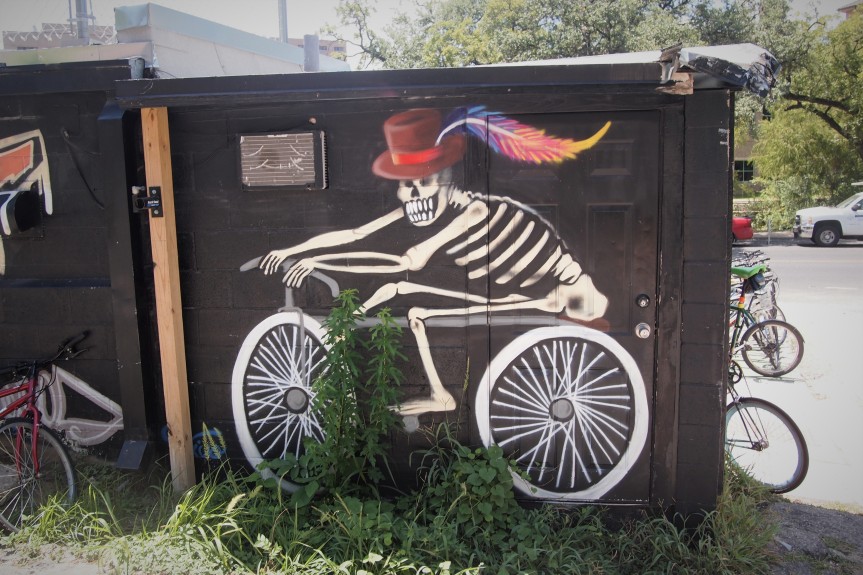In the Soviet modernity, not only mechanisms should have been exploited beyond their limits, not only workers were expected and were trying to surpass themselves in effectiveness of their labor, but living beings, cared and mediated by humans, were also enhancing beyond belief the hidden capacities of their bodies.
The instruments of the rising biopower were eugenics, active human-led environmental change, and husbandry loaded with the ideological demand of demonstrating the superiority of the Socialist governmentality.
When Foucault described what he called “anatomo-politics of the human bodies,” which presupposed “the body as a machine,” processed through different stages of disciplining and optimization (Foucault, 1978, 139), he did not mention that the bodies going through all the stages of the cycle which had to make them more efficient and more docile, were not only human. The non-human body was also a cog of the state gear wheel.
Marshalled by the regimes of biopower, pigs were becoming reproduction machines, cows—biorobots, chickens—egg conveyers, rats—laboratory instruments, sheep—fur-generating automatons, and dogs—alive mechanisms of cosmic exploration. Cows, pigs, sheep, chicken, geese, and all the breathing beings had to be useful, give what was demanded of them, and reproduce themselves; they were counted, weighed, measured, compared, exhibited; their products calculated, scaled, pasteurized, and distributed; their offsprings enumerated, examined, and their further trajectories decided.
The ubiquity and wide implementation of the process was like a mass madness, a lunacy of daydreaming caught in a swarm of hectic, frenetic activity giving no rest nor respite to humans and nonhumans alike. Seven-year-plans of developing of the Soviet economics were finished in five years, and five-year-plans in three years. The central and regional newspapers were dappled with “949 liters of milk for each cow in four months received milkmaid Nosova”; “milkmaid Melentyeva is taking an obligation to milk 2900 liters per cow” in a year; animals almost took Socialistic obligations as well: at least a sheep of the Ust Uda region in one kolkhoz was planned to produce 2,6 kg of fur a year; one hundred ewes were expected to bring one hundred five lambs a year; one sow bred 12 piglets; plants did not hang behind either: one hectare was supposed to produce 12,5 centners of crops, and so on (examples are from “Angarskaya Pravda” #42 (2093), 1960).
All across the Soviet Union individual milkmaids, steelmakers, coalminers, conveyer operators, and well as collective farms and enterprises, were taking on “raised obligations” (povishennie obyazatelstva) to produce, manufacture, assemble, make, complete, and accomplish. Every new achievement, were it a number of tons of steel or eggs per chicken, was soon surpassed, record broken, and it seemed that there will be no ending to enlarged capacities of the body, plant, machine, and metal.
Milkmaids were not just milking and taking care of cows, but “created milk rivers,” transforming the trope of fairy tales into the Soviet reality. Delicate corn was all of a sudden growing in Siberian taiga, Northern tundra, and Central Asia semisavanna for that sole reason that such was the wise decision of the Party. Michurin’s amazing apples not only were about to bloom in the regions which were historically too cold or too dry for them previously, but it was only a matter of time, and of several decades at that, until said apples would adorn the Mars’s rusty surface with the carpets of their shed petals and then fruits.
In such context, it was only too reasonable that prairies were transubstantiated into arable land and rivers had to be turned around and rush towards their streambeds, irrigating deserts. In 1947, the project of the near-Pole Salekhard-Igarka railway, which had to be built in permafrost, began emerging as a parallel to Baikal-Amur Mainline; the construction of Salekhard-Igarka was necessary not only in order to develop communications in the scarcely populated region, but also to shield the country from the enemies’ backstabbing blow which they could deliver any moment from the unprotected lands of the Arctic. People who were working on the railroad, imprisoned and converted into forced labor, were thrown into naked, barren landscapes, and expected to protect themselves by extracting out of thin air the shelters and sustenance, much as they were expected at other sites of the “constructions of the century.”
“Breathers” became robotic producers of goods and themselves; when the body is a machine, its frailty is but an annoying obstacle, and the stock of such bodies is practically inexhaustible, but recreatable, refillable, and restorable. Those had to be bodies brimming with enthusiasm, euphoric exaltation of living and participation in a great project of building the Sovietopia: the model of the future for the whole world.




